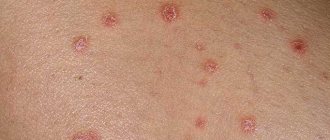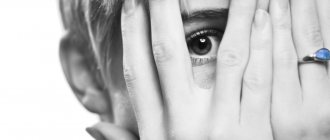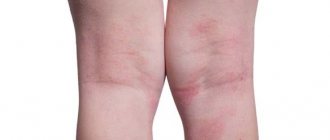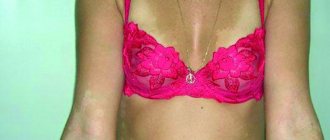July 29, 2020
Vulgar psoriasis is also called simple, ordinary. This is the most common form of the disease with the classic presentation of reddish, round plaques throughout the body. These plaques are slightly raised above the skin, tend to merge, and are covered on top with a whitish coating of small dry skin flakes.
Psoriatic plaques cause psychological and physical discomfort to the patient, as they can be perceived by others as a sign of an infectious disease, cause itching and can even bleed when injured.
Since this dermatological disease is autoimmune in nature, treating psoriasis vulgaris is a complex and lifelong task. In this case, not only correct recommendations from the doctor are required, but also lifestyle adjustments by the patient himself.
Main stages
Most often, vulgar psoriasis worsens in the winter season. If more than 10% of the skin area is affected, we are talking about a severe course of the disease, such psoriasis is called widespread. The plaques take on irregular, bizarre shapes and begin to spread to the upper and lower extremities, face, torso and neck. With a long course of the disease, the elements swell and become denser, especially in the lumbar and gluteal regions.
The course of vulgar psoriasis is always aggravated by factors such as stress, severe infections, and allergies to medications. In the absence of treatment or improper therapy, the pathology progresses and takes a chronic course. In rare cases, the disease is complicated by psoriatic erythroderma, artopathy, and pustulosis.
Both vulgar and other forms of psoriasis are characterized by three typical symptoms, the so-called psoriatic triad:
- Stearic stain. When the papules are lightly scraped, an increase in peeling is observed, giving the surface of the papules a resemblance to a crushed drop of stearin.
- Terminal film. After complete removal of the scales, a wet, shiny film appears on the surface.
- Bloody dew. Pinpoint bleeding appears after careful scraping of the terminal film of pinpoint, non-merging droplets of blood.
During vulgar psoriasis, dermatologists distinguish three characteristic stages:
- Progressive. New papules with a characteristic erythermatous rim, covered with scales, appear periodically. The papules themselves gradually increase in size due to peripheral growth.
- Stationary. During this period, there are no new papules, the number and size of existing formations are maintained. Not only papules, but the entire skin peels off. A pseudoatrophic Voronov's rim begins to form - a soft shiny ring that surrounds the papule.
- Regressive. At this stage, there is a reduction in peeling and the number of papules in the flesh until they disappear completely.
Most often, psoriasis vulgaris has a long course with frequent relapses, which can recur up to several times a year. Sometimes psoriasis worsens not in winter, but in summer, with intense solar radiation. The most severe variant of the disease is its non-seasonal course: there is no connection between exacerbations and the time of year, and there are practically no periods of remission.
Mechanism of disease development
Risk factors lead to impaired immune defenses in the body, due to which the immune system produces an incorrect reaction that provokes skin damage. During this process, autoimmune disorders appear. The disease can also be triggered by causes not related to immunity.
Until now, all theories about the hereditary transmission of psoriasis are considered speculative. There is not yet a single theory that would explain all cases of the disease.
As a rule, latent psoriasis is genetically transmitted, in which the body is predisposed to metabolic disorders within cells, including the epidermis. External causes can cause the disease to manifest itself when immature cells begin to rapidly divide.
Complications of common psoriasis
Most complications of the disease are more serious forms of it. This usually occurs when patients do not receive the necessary treatment. Such complications include the following:
Joint psoriasis
It manifests itself in the form of inflammation of the joints of the arms and legs, spine, and fingers. In most cases, inflammation is asymmetrical: this is considered the distinguishing feature of psoriasis from rheumatoid arthritis.
Arthritis mutilans
This pathology is a complication of articular psoriasis. With this disease, bone tissue is destroyed, which causes curvature of the joints and their mobility is impaired.
Diseases of internal organs
Psoriasis, which is common, in many cases leads to damage to internal organs: the cardiovascular, endocrine and nervous systems. This increases the risk of hypertension, diabetes, cerebral circulation problems and myocardial ischemia.
Symptoms and signs
Vulgar psoriasis most often develops gradually; in very rare cases, the disease has an acute onset. The main symptom of vulgar psoriasis is dense limited nodules that rise above the surface of the skin and are covered with grayish-whitish scales on top. Sometimes these elements peel off, and when the surface of the papules is scraped, a shiny film appears.
The skin can be severely peeling on all parts of the body, the rashes may not be numerous: with mild damage they occupy up to 3%. With moderate severity of the disease, papules occupy 3-10% of the skin. As a rule, the affected areas are the extensor surfaces of the knee and elbow joints, as well as the lumbosacral area, and the extensor surfaces of the upper and lower extremities. Moreover, plaques can be located on other parts of the body - scalp, palms, feet. With mechanical impact (for example, microtrauma and scratching), rashes can spread over large areas in areas of irritation.
Both vulgar and other forms of psoriasis are characterized by three typical symptoms:
- Stearic stain . increased peeling with slight scraping, giving the surface of the papules a resemblance to a crushed drop of stearin.
- Terminal film . On the surface, after scraping off the scales, a wet, shiny film appears.
- Bloody dew. Pinpoint bleeding is a consequence of injury to the capillary wall.
Advantages of treatment at the Paramita clinic
Do you have bright rashes on your elbows and knees that are very itchy and flaky? Have you tried all the remedies, but the lesions on the skin are only increasing? Alas, you cannot get rid of psoriatic plaques simply with medications; an integrated approach from experienced specialists in oriental medicine is required.
By contacting the Paramita clinic, you will have the opportunity not only to stop the development of the disease, but also to nullify the appearance of psoriatic plaques on your skin.
In addition to treating the underlying disease, the techniques and methods of oriental medicine used will restore your overall immunity, improve metabolic processes in your body and relieve many other problems.
Sign up for a free initial appointment
Causes of vulgar psoriasis
Unfortunately, even today experts cannot identify a single cause of vulgar psoriasis. Each case of the disease is considered individually.
Doctors call the most common causes of psoriasis:
- Genetics. Often, psoriasis vulgaris, like many other diseases, is associated with a hereditary predisposition. Sometimes the disease manifests itself from an early age.
- Metabolic disturbances . Difficulties with metabolism can lead to serious illnesses. For example, lipid metabolism disorders often accompany psoriasis.
- Viruses . This theory appeared recently. Scientists conducted experiments in which plaque particles were injected into animals and the disease was “inoculated.” However, the virus itself that causes the disease could not be determined.
- Psychological factors . According to doctors, most often the disease is provoked by constant and one-time stress. Surprisingly, there have been cases when a person, having experienced severe stress, went to bed healthy, and in the morning woke up with plaques on his body.
- Skin injury . In very rare cases, skin injuries and insect bites that go unattended can lead to skin diseases, the most common of which is psoriasis.
In addition, there are a number of factors that significantly increase the likelihood of the disease occurring. Bad habits, hypothermia, taking medications, as well as chronic diseases, for example, HIV, tuberculosis, diabetes, many times increase the likelihood of the disease occurring.
Forms of common psoriasis
Depending on the stage of inflammation, the prevalence of rashes and the severity of the lesion, different forms of psoriasis are distinguished.
Common exudative psoriasis
With this form of the disease, inflammation appears on the skin, covered with scales and crusts (sometimes multi-layered). Under the crusts there is a moist layer of skin. Occurs in patients with diabetes, obesity or thyroid disease.
Psoriasis, widespread and arthropathic
This is one of the most severe forms of the disease, accompanied by arthritis. It is also called joint psoriasis because the disease affects the joints. At the same time, they begin to hurt and swell, and the person loses the ability to move normally. Most often, the disease manifests itself in the small joints of the hands and fingers, knees, and feet. The affected areas swell, the joints become deformed.
Psoriasis vulgaris widespread
This form of the disease appears due to the slow progression of ordinary psoriasis, in which the rashes merge with each other and occupy a significant part of the body surface. In this case, the skin in the affected areas turns red, swells, flakes and itches very much. The patient feels general weakness, his lymph nodes may become enlarged and other related problems may appear.
Advanced plaque psoriasis
The distinctive features of this form of the disease are fever and general weakness. The main symptom is the appearance of protruding small plaques on the redness that hurt and itch. This form of the disease occurs with attacks of exacerbations.
Papuloplaque psoriasis
A very severe form of the disease: it can occur as both ordinary and widespread psoriasis. It begins with a sudden exacerbation, which is accompanied by fever and weakness. The cause of exacerbation is most often severe stress, infections and self-medication with the wrong drugs. During an outbreak of the disease, plaques and papules hurt very much. They can appear on old redness and clear skin.
Treatment of vulgar psoriasis
Treatment of vulgar psoriasis is a strictly individually selected set of measures by a dermatologist, aimed at eliminating the exacerbation of the disease. It is important to understand that psoriasis is a chronic disease, and the main goal of therapy is to prolong its period of remission as much as possible. Let's look at the main methods of treating pathology.
- Drug therapy . As a rule, it includes the use of external agents, but in rare cases, patients are also advised to take medications internally. Effective for vulgar psoriasis are corticosteroids, hormonal-based drugs that are used in the acute course of the disease. During periods of remission, it is important to use non-hormonal ointments, which are safer. An important aspect of the treatment of vulgar psoriasis is the use of products containing vitamin D3.
- Physiotherapy . To achieve maximum effect and get rid of the disease for a long time, a dermatologist can prescribe magnetic therapy, ultraviolet treatment, and ultrasound.
Home treatment
Homemade psoriasis treatment recipes based on natural foods and herbs can be an effective complement to drug treatment for psoriasis. However, before using one or another method of treating a disease, the patient must agree it with the attending physician.
The most popular folk recipes for the treatment of psoriasis are the following:
- Decoction of 5 herbs. For oral administration, a product is prepared based on plants that have anti-inflammatory, anti-allergenic, wound-healing and antimicrobial effects. As a rule, mix a tablespoon of dry herbs of nettle, string, yarrow, St. John's wort and celandine. The mixture must be poured into a liter of boiling water and boiled for 10-15 minutes, and then taken orally three times a day.
- Tar-based ointment will help quickly and gently cleanse the skin. To prepare it, 200 grams of pine tar must be mixed with two tablespoons of camphor oil, and then add 30 grams of grease. Be sure to mix all the ingredients thoroughly and apply to the plaques up to 3 times a day. Typically, the course of treatment continues until the skin is completely cleared of plaques.
Ointments and creams
Ointments and creams for vulgar psoriasis are prescribed exclusively by the attending dermatologist, based on the manifestations of the disease and the patient’s condition.
For example, Rederm ointment. This product is based on a combination of two components, betamethasone and salicylic acid, and has a complex effect on the skin - anti-inflammatory, antipruritic, antiallergic and keratolytic.
How is treatment carried out at the Paramita Oriental Medicine Clinic?
But the first step on the path to getting rid of psoriatic plaques is a preliminary appointment with a specialist. At this appointment, the doctor will determine the nature of the disease, its stage of development, the degree of damage to the skin, and the possible causes of this disease in a particular patient.
Based on the data obtained during the survey - and, if necessary, a laboratory examination is also prescribed - the doctor determines the necessary treatment and prescribes a course of complex therapy sessions.
The cost of preliminary admission is 500 rubles.
Prevention
As we have already said, psoriasis vulgaris is a chronic disease that cannot be cured completely, but you can stop the symptoms and make the disease go into remission for a long time.
The main rule for the prevention of psoriasis is a fighting spirit and attentive attitude towards yourself. Important preventive measures for the disease also include:
- rejection of bad habits;
- regular walks in the fresh air, moderate physical activity;
- proper nutrition;
- adherence to daily routine;
- proper sleep, proper rest;
- elimination of stress and strong feelings.
Only a sensitive attitude towards yourself and your health will allow patients, even with advanced forms of vulgar psoriasis, to forget about their illness for a long time and return to a full life.
We hope that our recommendations for the treatment of vulgar psoriasis will be useful to you. Consult your dermatologist about Rederm ointment for psoriasis flare-ups. This product, based on a combination of betamethasone and salicylic acid, has anti-inflammatory, antipruritic, antiallergic and keratolytic effects on the skin.











